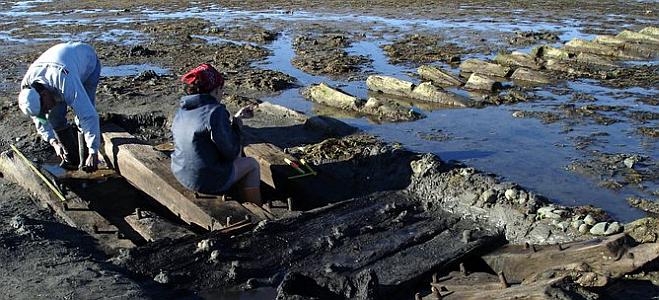
Photo: PROAS-INAPL, Argentina
In 1858, the whaling ship Dolphin sailed from Warren, Rhode Island, and never returned. The New York Times notes that the ship’s 42-person crew was rescued the following year from the waters of the southern Atlantic Ocean by an Argentine mariner, and its captain continued to command voyages a decade later, but the ship had continued to exist only in memory and written records.
Now, an analysis of the tree rings in the planks and futtocks of the remains of a shipwreck in Patagonia has helped to identify where the Dolphin was lost more than 150 years ago.
In 2004, the remains of a shipwreck were found off the coast of Puerto Madryn, a gulf city by the northern shores of the Patagonian region of Argentina. The ship had been a whaler as evidenced by the tryworks, a brick furnace with two large iron pots built into the center of the main deck used to boil down whale blubber, that was found in the shipwreck.
But what whaling ship was it? Scholars suspected that the wreck might be the Dolphin but had no conclusive proof. This changed all when new research was published in August in the scholarly journal Dendrochronologia, which allowed researchers to identify the shipwreck to a high degree of certainty, said Ignacio Mundo, the lead author and an adjunct researcher with the Dendrochronology and Environmental History Laboratory at the National Scientific and Technical Research Council in Mendoza, Argentina.
“I find it incredible that starting with a piece of wood on a beach, we could make the connection to a boat that was built in Rhode Island,” Dr. Mundo said.
Tree-ring analysis helped researchers to pinpoint the ages of the wood types found among the remains of the Dolphin, allowing them to date the pine to 1810 and the oak to 1849, Dr. Mundo said.
Samples with more than 75 rings, the minimum amount sought to ensure accuracy, were compared to a network of tree ring data from the Northeast and Southeast regions of the United States, according to the research.
